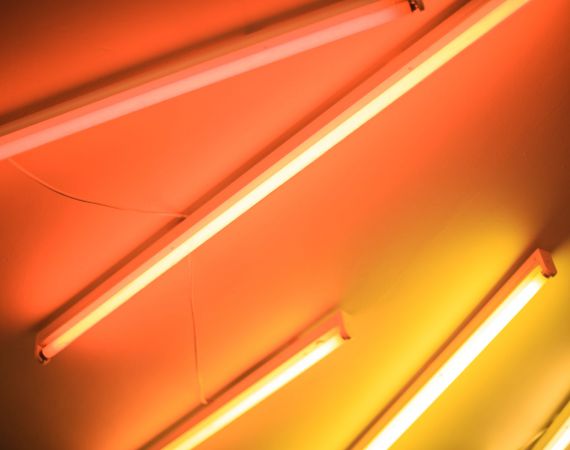Article
Posted on Mon 19 Sep 2016
Social Tech: A New Hope?
Three of our residents share how they are using technology for social good.

Posted by

Jo Lansdowne
Jo leads Watershed's Creative Technology team; supporting research activity, talent development and the resident community to deliver brilliant work.We have been talking a lot about hope in the Studio community recently. In particular we have been pondering the difference between hope and optimism. The latter can sometimes feel difficult to sustain in a world of austerity, political uncertainty and racist chatbots. Technology has the power to change how we experience the world and who has 'write-access' to the future, but the digital revolution arrived and liberty, equality, and fraternity have not always been top of the wishlist. Whether you think that digital will ultimately mean the end of capitalism or that it is excluding voices at its peril, optimism right now feels highly contested.
Hope, however, is abundant in the Studio community. We have a shared belief that the road to a better future is open, disruptive and co-produced. This is manifest in projects such as last week’s Unfixed 2.0 (a residency in collaboration with the Australian Network for Art & Technology, Access2Arts and Unlimited with eight Australian and UK Deaf and disabled artists investigating arts, disability and technology), our Playable City programme (putting people and play at the heart of our future cities) and in the amazing social enterprises springing up around Bristol.
In this article we bring together three of these inspiring young companies, who are also residents, to talk a little about how they are using technology for social good.
Chloe Meineck is a social designer, maker and inventor. She runs Studio Meineck whose first two products Music Memory Box and trove use objects to support memory in vulnerable groups.
Samantha Payne is the co founder of Open Bionics an award-winning startup 3D printing robotic hands for amputees that look and feel good (Sammy was at the White House last week showing off their latest products).
Ed Rogers is the founder of Bristol Braille Technology who are developing Canute, an affordable Braille e-reader.
What motivates your work?
Chloe: There are too many chairs. Whilst there is a need for them, there are thousands to choose from already. Why design and make another one? For me design is exciting when you’re addressing a real need, not a desire.
Swap to a person with dementia whose family is trying to find something to help their loved one, there's hardly any products or services available to help them. My personal experience of visiting a loved one with dementia, finding it difficult to communicate with them, and then witnessing the transformative effects familiar music had on her, was an early inspiration for Music Memory Box that still motivates me today. I love running workshops and seeing people living with dementia faces light up, sing and even dance to music that triggers a memory and story in someone that before seemed confused, anxious and unconnected.
Sammy: I think the Open Bionics team feels incredibly motivated every time we see a child use one of our bionic hands. Seeing a 10 year old's parents' reaction is a real push for us because it's a very emotional reaction. Parents want to provide the best for their child and if they're not doing that, they feel like failures. It's tough for parents to see bionic hands in existence that they know will help their child and also know that they can't afford it. So, when they get to see their child use a low-cost multi-grip bionic hand to throw a ball for the first time and pack their school bag, it's something that they've been waiting to see for a long time. It's also just really fun to see a youngster open and close their bionic fingers for the first time and really adopt the robotic hand as if it has always been their own limb. We get to see lots of amazing smiles.
Ed: Personally: Bloody-mindedness, or maybe keeping my word, if you're being charitable. Once you've stated you're going to do something to help people, and received their pre-emptive thanks and support for saying that, letting them and yourself down doesn't seem like an option. Also, when the work is hateful, the little thought, "What else could you be doing that is more important, and that no-one else would otherwise do?"
For others on the team there are a variety of motivations. Many like to make machines that serve an important function for people and to see this proven in the bi-monthly meetings we have between the team and the Braillists. Others enjoy the extremely intricate mechanical challenge. Some others have personal experience of the importance of what we're doing and so just want to complete the Canute as soon as possible.
What is your favourite 'social tech’ product?
Chloe: My favourite socially minded product is PARO. PARO is a therapeutic robot seal. No really. I've seen it in use with people with dementia. PARO essentially wraps up the therapeutic benefits of having a pet or an animal, but is predictable, hygienic and can stay in the arms of its owner for the whole day. I like the way the person with dementia can be given independence in looking after something - so they are not always the focus of care. PARO inspires and raises ethical questions, some care givers worry about a robot toy being treated like a living thing, especially when the line between reality and imagination with people with dementia could already be blurred. I feel the opposite and think the future of dementia care should support the person with dementia in whichever reality they are in. Soft carebots like PARO could help develop our caring responsibility, enhancing rather than depleting person to person care.
Sammy: There are so many! Having worked for two years on Open Bionics we've been lucky enough to meet and work with some amazing social tech projects.
Personally, I'm a big fan of Dave Levan and Loay Malahmeh of Refugee Open Ware, and Sam Parveez of Andiamo. Loay has been working to bring Fab Labs into refugee camps in Jordan so that people who have suffered injuries can use open source tech to solve their own problems. I recently got to hear from Asem Hasna who lost his leg in Syria and travelled to Jordan where he was able to use their fab lab to 3D print his own prosthesis socket for his leg. The ROW team have raised significant investment to help refugees build their own devices / products, and even start their own businesses from inside refugee camps.
Sam at Andiamo has been developing 3D printed orthotics for disabled children. Open Bionics and Andiamo have a lot in common, and it has been great to learn from Sam. She is really changing lives for families of children with disabilities and making life more comfortable for the children. It's great to see another product use 3D scanning and 3D printing to revolutionise a medical space.
Ok, and just one more... My friend Nico (known as BioNico, because he has one bionic hand) set up a Human Fab Lab in France called My Human Kit. It's dedicated to working with people with a range of disabilities to create tools that will help them to improve their quality of life.
Ed: I'm not sure about the term 'social tech'. Favourite assistive technology product is probably the Perkins Brailler, a Braille typewriter that weighs about 8lb, was designed in 1950 and remains as useful and as popular to this day. Mine was actually built in 1954 and still works fine, without so much as a servicing. Tempting to say they don't make 'em like that any more, but they do, exactly the same in fact, because the design is so timeless.
What is your design process?
Chloe: At Studio Meineck we specialise in designing with people rather than for people. Working closely with charities, academics and arts organisations, we facilitate workshops with a view to giving a voice to vulnerable groups about what their issues are.
Drawing on the discussions enabled by these workshops and an approach that blends craft, technology and co-design, we work towards tackling the problems that these groups face by developing carefully considered beautiful products. What's most interesting for us at the moment is that we're getting closer to the stage where we can make lots of Music Memory Boxes and get it out there into peoples hands - so it's very exciting.
Sammy: Hard question! At first we got the design process wrong. We were stuck in the lab working to solve a problem independently from the people who actually experienced it. It was a great failure to experience really. Our design process greatly changed when we started phoning up hundreds of amputees and asking all of the questions. Since then we've been dedicated to co-creating. Every new idea we have is vetted by amputees and when we build that idea it is tested by a group of amputees. We really rely on users for direction and feedback. It's not a process of creating for someone, as much as creating a product with someone.
Ed: Jelly wrestling. Many an otherwise intractable team conflict efficiently resolved.
For more examples of great Social Tech companies, have browse of the Nominet 100.